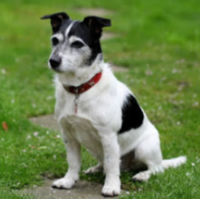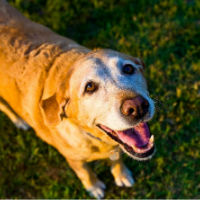FYI: If you buy something through a link on this site I may earn a commission - at NO extra cost to you.
Training An Older Dog
Are you worried about training an older dog? Afraid that you won't be able to housebreak him, or teach him good manners and new behaviors? Well, don't be!
In principle, training older dogs is exactly the same as training young puppies.
The only difference is that you will need an extra helping of patience because more mature pups and adult dogs may take a little longer to pick up new behaviors and learn new skills. This because dogs are creatures of habit and the longer they've spent with 'bad' habits the more ingrained they're going to be.
It means you need to allow Fido a bit of extra time to UN-learn those old/bad habits (such as peeing on the rug or jumping on visitors) as well as learning the new, more acceptable behavior.
The good news is that he's perfectly capable of learning just about anything you want him to. Good potty habits, obeying basic obedience commands, and having nice manners are the most important things to work on at first.
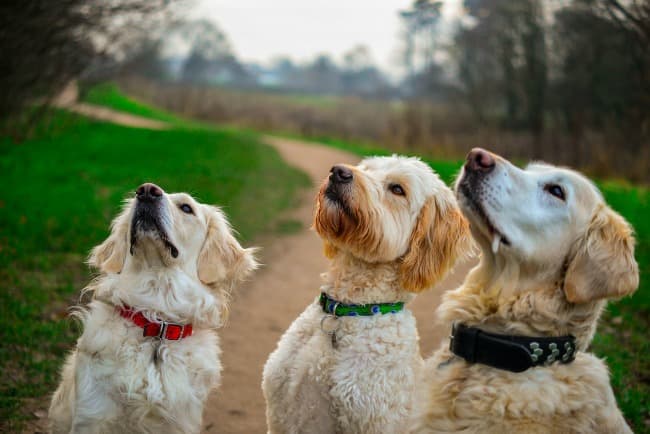
Crate Training An Older Dog
Let's start with crate training, because living with an adult dog who isn't housebroken makes life a real challenge and, when you want to house train an adult dog, using a crate is the most practical way to go about it. It's also the most effective.
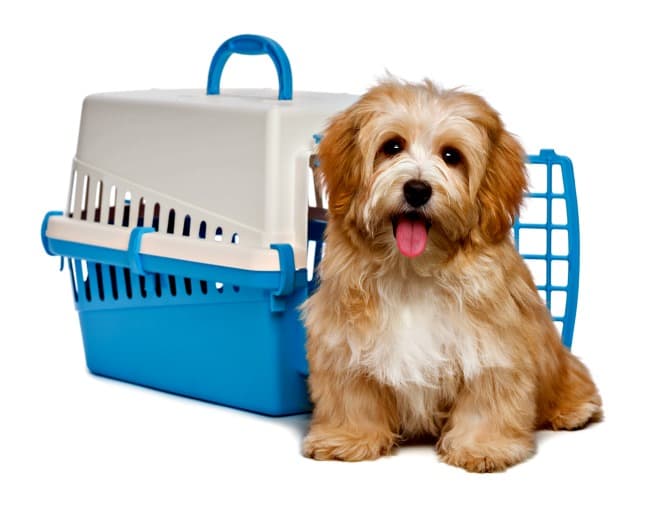
The good thing about working with an adolescent pup or adult dog is that he will have good control over his bladder/bowels. This makes housebreaking a whole lot less time-consuming.
However, if you're house training a senior dog who has any incontinence issues or bladder weakness then you're going to need to give him more frequent potty trips, and possibly make other adjustments.
Crate training is so effective, because it works by using your dog's natural instinct not to soil his den (in this case it's his crate). The vast majority of dogs will try very hard to 'hold it' while confined, even if they really NEED to go.
But don't take advantage of this and make your dog suffer, and also don't dawdle when you do let him out. Put on the leash and get him outside right away.
Crate Training Guidelines For Adult Dogs
- Choose a crate that's easy to clean to begin with.
- Have dog urine stain & odor removing products to hand
- Follow a predictable daily routine.
- Crate your dog whenever you can't be supervising him.
- Don't allow a new dog free access to your whole house.
- Give him at least four potty breaks per day.
- Be calm but upbeat when encouraging him to 'perform'.
- If he doesn't 'go' outdoors, be extra vigilant once back inside.
- Put a couple of indestructible chew toys in the crate with him
- Learn how to recognize the difference between whiny complaints and true separation anxiety.
You can find all the information you need to succeed with housebreaking and crate training your adult dog on this page... Housebreaking An Older Dog
Obedience Training Older Dogs
House training is only part of the story.
Training an older dog properly also includes helping him to learn good manners and basic obedience.
A disobedient dog who jumps on everyone, refuses to listen to you, pulls on the leash and generally acts like a brat is no fun to be around... and it's not much fun for him either.
Children feel safer and more secure with boundaries and rules to guide them, the same thing applies to dogs. So, to keep everyone happy, it's important to help your older dog learn what behavior is acceptable in his home and when out-and-about.
Obviously a puppy learns more quickly and is easier to control than an 'teenage' pup or adult dog. But as long as you're patient, firm (but loving), consistent and determined, you can teach Fido to 'shape up' - given some time.
For obedience training, 'Sit' is usually the first lesson, followed by 'Down', 'Stay' and 'Come' (which is actually the most important one, but the most difficult to teach and enforce).
Check out these basic dog commands and see step-by-step guidelines to teaching each one.
Use only positive, rewards-based training techniques - this means encouraging Fido to succeed in his lessons and rewarding him when he does. If he fails, don't punish him! Simply start at the beginning again.
Puppies have very short attention spans, but one of the advantages of working with older dogs is that they can concentrate for longer. Other than that the principles are the same.
Set aside some time each day to work on his lessons. Don't try to fit teaching 4 different commands into one session.
Work on one, maximum of two, commands in any one lesson. Do several repetitions of each and always end on a positive note with your dog being successful.
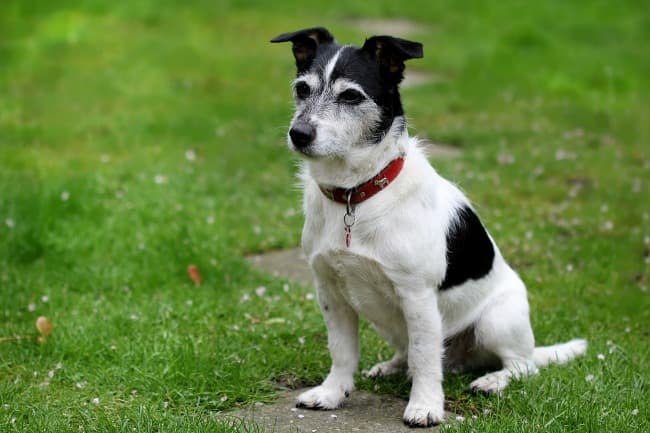
If you're trying to teach something new and Fido just can't 'get it'. End the lesson with something he DOES know how to do, and reward him lavishly. Training sessions should be fun for him, with praise and treats.
A short playtime at the end also helps him let off any 'head of steam' he's built up while concentrating, and helps you bond with each other by having fun.
I strongly recommend enrolling your dog in a formal obedience class too. These are a great way for you both to get some extra training help, plus it gives him some valuable socialization in a controlled and safe setting.
Most cities and towns have plenty of dog obedience schools so you shouldn't have too much trouble finding one near you.
If your dog hasn't had any formal training, start with a basic obedience class. If you call up and explain what you're looking for, any school will be only too happy to help.
It takes time to build a relationship with your dog. If you've had him since he was a pup but somehow just never got a handle on the training side of things, you're ahead of the game in that you already KNOW this dog.
You know his quirks, personality, strengths and weaknesses. Plus you have a bonded relationship already. This helps.
But perhaps you're buying or adopting an older dog. In that case he's an unknown quantity, and it will take time for you to learn about each other and build up a level of love and trust.
In that situation don't rush things. Moving too fast with any sort of training will just stress Fido, and stress you! Take things slowly, and move at a pace that is comfortable for you both.
Leash Training Your Adult Dog
The biggest difference between leash training a puppy and an adult dog... is the strength of the pulling he's going to do. A 10lb pup isn't going to attempt to wrench your arm out of it's socket the same way a 50lb or 100lb dog will. Other than that the principles are the same.
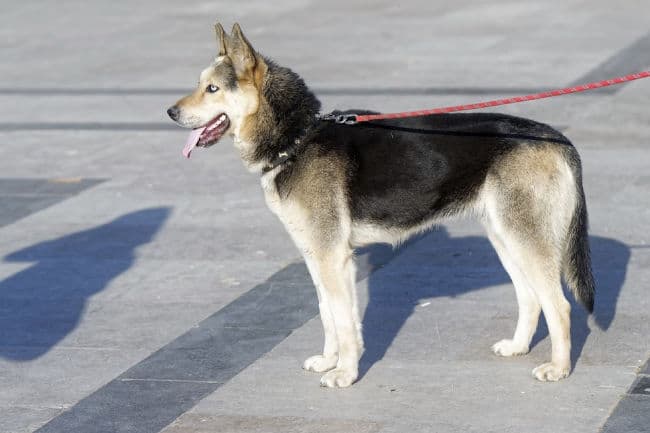
Leash training an older dog shouldn't be a tug-of-war, or a battle of wills, and if you get the right equipment it won't be.
Most adolescent puppies and older dogs have strong neck and shoulder muscles, and you might be surprised at how effectively even a small dog can haul you around the block.
The key to getting control is to use a training collar or harness.
No, not one of those electronic/pulse/shock collars, but a metal choke chain or prong collar. Used correctly these are NOT dangerous, or cruel.
In fact you're much more likely to hurt Fido, even do him long-term damage, if you drag and yank at his neck while he's wearing a normal collar.
Personally I've always found small to medium sized dogs usually do best with a simple martingale collar, large and extra-large breeds can do well in these too. If you need something a bit stronger choose a prong collar rather than a chain 'choke' collar as the latter can cause damage to your dog's neck/throat if he pulls hard against it.
This may sound counter-intuitive when you compare the two collars visually but prong collars correct effectively with very little pressure on the neck (and also work on long-coated breeds) but choke chain collars tend to be somewhat ignored, especially by large strong dogs, and therefore there is a lot more pulling force against the neck.
This is also especially true if you're not experienced and aren't using the collar/leash optimally.
There are also several different types of halters/harnesses that work really well. Here are a few options you might want to check out:
Even with the right kind of collar and leash (with leashes, you want a leather or woven fabric style, do NOT use the retractable leashes. They're dangerous and unpredictable), don't expect Fido to walk nicely beside you right away.
It's still going to take a LOT of practice, plenty of corrections, and even more patience, to teach him not to yank you off your feet. But it can be done.
When you're using a training collar there's a right way to give a leash correction, and a wrong way.
The right way is by giving what is called a 'pop' on the collar at the same time as giving a verbal correction. The 'pop' is a short, sharp tug on the leash that tightens the collar for a moment, then releases it right away. This gets your dog's attention, but doesn't hurt him.
If you're using a prong collar you can make the 'pop' shorter and less sharp because the prongs need less pressure to be effective than the chain does.
When you're using a harness or halter, this doesn't apply. Gentle firm pressure and a good grip on the leash is usually enough.
I'd recommend starting your leash training an older dog at home. In your own yard if possible.
You hold the leash in your right hand but with your dog on your left side, the leash should run across the front of your body with your left hand holding it at thigh level or thereabouts.
Have your dog sit (or stand if he's not following the 'sit' command just yet) by your left leg.
Don't allow him to pull forward until you're ready, if he lunges give him a gentle 'pop' on the collar, or tug on the harness and tell him "no, wait'.
Once he's still (even if it's just for 10 seconds) then you step forward and tell him 'Let's go'!
You're not aiming for a long walk here, just a few yards of calm is fine. If he pulls, yanks, twists and lunges, stand still and use the collar pops and verbal correction to bring him back to you.
Only move forward when he's stopped pulling and is still. Fido will soon figure out that if he pulls, you stop, so he'll try hard to slow down.
This is a part of training that I recommend getting some professional help with if possible because your dog may learn more quickly at a formal class, and you will get the help you need with the leash technique and any problems you have.
Socializing An Adult Dog
Socialization is one of the most misunderstood, and neglected parts of dog training in general, but it's a very important one.
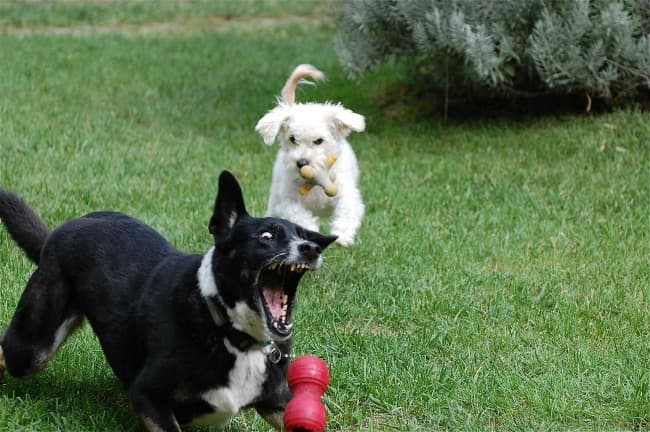
'Socializing' your dog, basically just means helping him to feel comfortable in social situations and around other people, pets and objects.
If you socialize a puppy properly, and continue with it throughout his lifetime, he will be a friendly, confident and happy adult. If an adult dog has missed out on this early training, he may already have anxieties and fears about other people, dogs, noises, cars and so on.
This can make socialization part of training an older dog a bit of a challenge
However, it can be done as long as you take things slowly, follow your dog's lead whenever possible and don't push him much outside of his comfort zone. Again this is something that can be made easier with a little bit of experienced, or professional, help.
Some dogs will warm up to new people and experiences fairly easily, others may take much longer to feel comfortable.. or never get to that point at all.
Breed characteristics play a role, and of course so does individual personality. Some dogs never meet a stranger they don't love, others take a while to warm up, a few will mistrust everyone.
Some are confident, or at least calm, even in strange places, others get very anxious and may become defensive or even aggressive.
If you know your dog well, you can judge how he's likely to react and tailor your socialization experiences to his needs, temperament and ability.
But if you've only just brought your dog home, or this is a new relationship, you'll need to start from square one and take things very slowly until you find out how he's going to react in every and all situations.
Either way, always try to move at your dog's pace, and do your best to make all his activities, meet-and-greets and social experiences fun for him.
you might also like...
- Home
- Dog Training
FTC Disclosure: Some pages on this site contain affiliate links. I may earn on qualified purchases.




